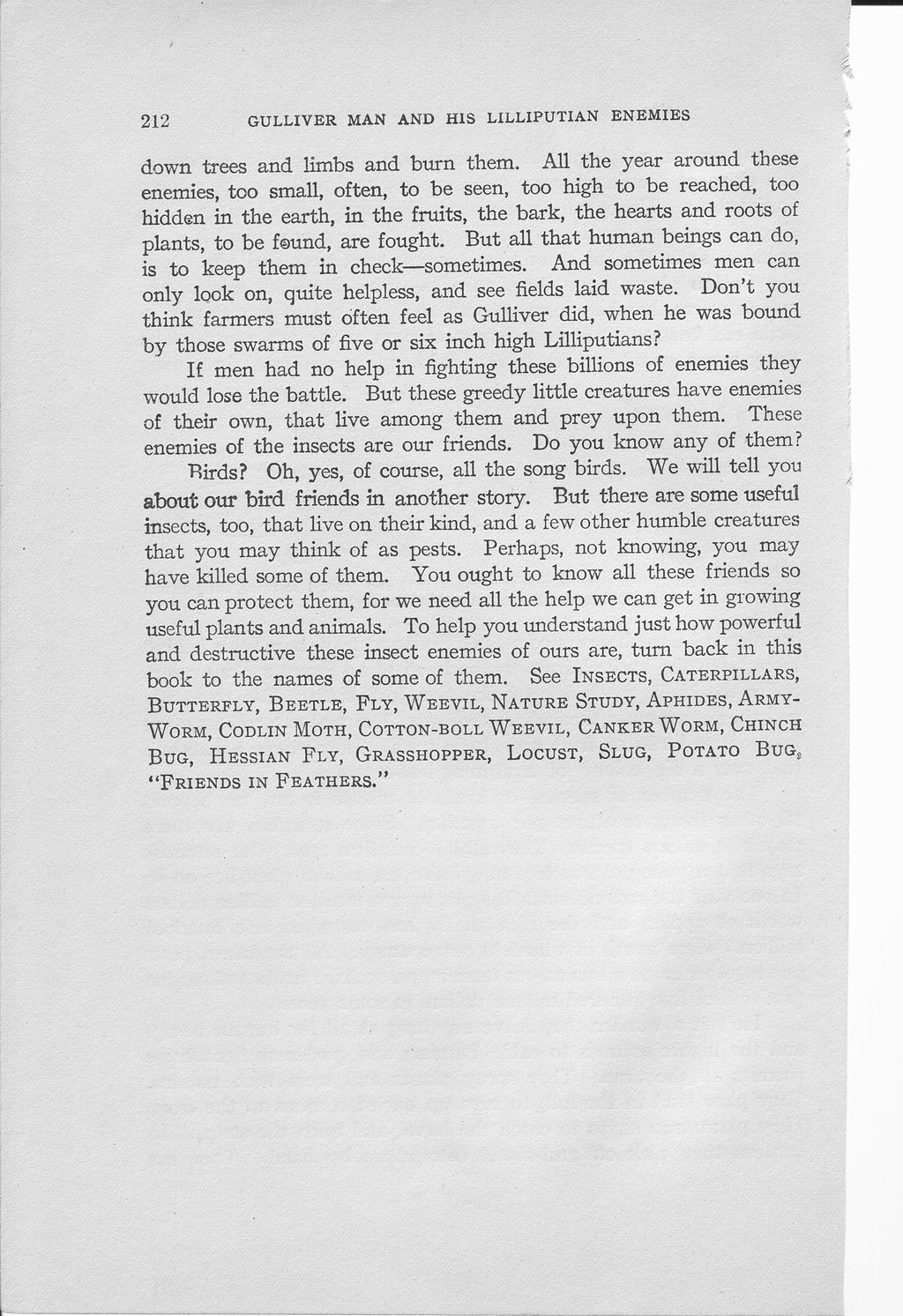down trees and limbs and burn them. All the year around these enemies, too small, often, to be seen, too high to be reached, too hidden in the earth, in the fruits, the bark, the hearts and roots of plants, to be found, are fought. But all that human beings can do, is to keep them in check—sometimes. And sometimes men can only look on, quite helpless, and see fields laid waste. Don't you think farmers must often feel as Gulliver did, when he was bound by those swarms of five or six inch high Lilliputians?
If men had no help in fighting these billions of enemies they would lose the battle. But these greedy little creatures have enemies of their own, that live among them and prey upon them. These enemies of the insects are our friends. Do you know any of them?
Birds? Oh, yes, of course, all the song birds. We will tell you about our bird friends in another story. But there are some useful insects, too, that live on their kind, and a few other humble creatures that you may think of as pests. Perhaps, not knowing, you may have killed some of them. You ought to know all these friends so you can protect them, for we need all the help we can get in growing useful plants and animals. To help you understand just how powerful and destructive these insect enemies of ours are, turn back in this book to the names of some of them. See Insects, Caterpillars, Butterfly, Beetle, Fly, Weevil, Nature Study, Aphides, Army-Worm, Codlin Moth, Cotton-boll Weevil, Canker Worm, Chinch Bug, Hessian Fly, Grasshopper, Locust, Slug, Potato Bug, "Friends in Feathers."
